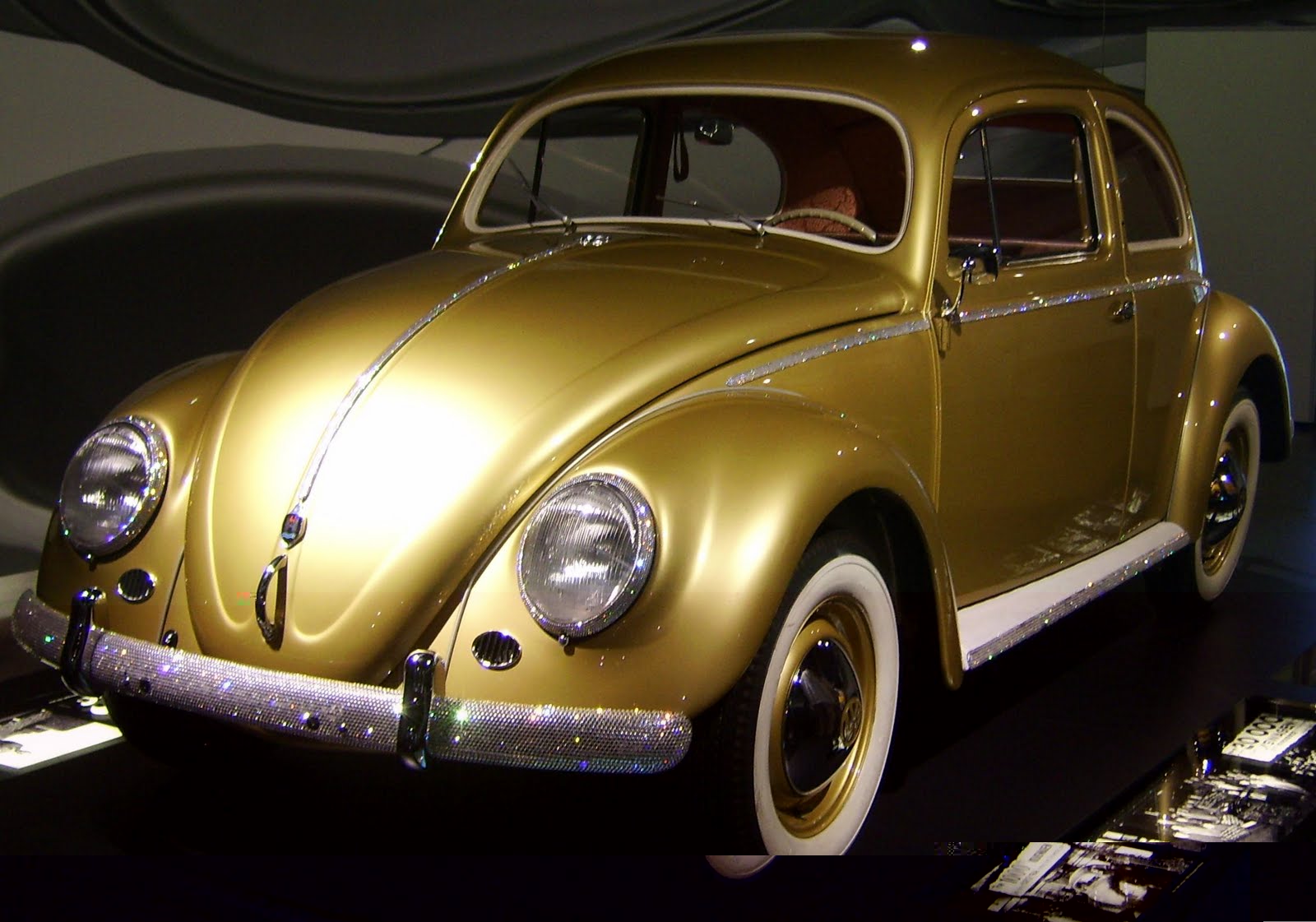In January 1948 post war Germany lay smashed and broken. And Heinz Nordhoff started his new job.
He’d been hired as head of the Wolsfburg Motor Works.
The first thing he did was replace the English sign with one that said: VOLKSWAGENWERK
The British who were supervising the plant sensibly overlooked this small act of bravado.
But it didn’t escape the attention of the rag-tag, largely refugee, workers who produced a quirky little car that came to be known as the Beetle or Bug.
The second thing Nordhoff did was move into the factory.
For six months he slept there on a cot.
This also got noticed by the demoralised workforce.
Two months later, he was summoned to a meeting in Cologne.
On one side of a conference table sat Henry Ford II and Ernest Breech, Ford Motor Company’s chairman.
On the other side were Colonel C. R. Radclyffe of the British Military Government and Heinz Nordhoff.
The purpose of the meeting was simple, to persuade Ford to take over Volkswagen -- for free.
When it came to decision time Ford turned to Ernest Breech for his opinion.
Breech replied, “Mr. Ford, I don’t think what we are being offered here is worth a damn.”
And the verdict was unanimous.
A British company, The Rootes Group had turned down the same deal the year before.
Sir William Rootes dismissed the car as, “too ugly and too noisy.”
Curiously there is no record of either Rootes or Ford driving the car.
Still, one thing was clear.
They couldn’t give Volkswagen away.
It wasn't hard to see why.
The plant lay in ruins.
Allied bombs had shattered large areas of the roof and all the windows.
Much of the floor was ankle-deep in stagnant water.
Production was pitifully slow, at least 300 man hours per car.
German Reich Marks were almost worthless, so raw materials like steel and coal had to be bartered for Volkswagens.
The only buyers for the car were the occupying forces.
Even though it had been designed by the legendary Ferdinand Porsche, the VW's engineering was hardly noteworthy.
Air cooled engines had been around since the 1900s.
Rear engine design went back to the earliest days of cars.
Ditto rear wheel drive.
Independent suspension was not unusual.
There was nothing innovative about it
And it was small and funny looking.
But Heinz Nordhoff thought different.
And he left the meeting determined to make VW the largest car manufacturer in Europe.
He realised these features had never been combined in a car with such good fuel economy and reliability at such a low price.
And that was an innovation.
It was a car Porsche had designed from the inside out.
A car that looked funny, only because its bodywork used as little steel as possible to cover the engineering.
Post war Europe was going to need cheap reliable transport.
And Nordhoff believed the Beetle could provide it.
He just had to figure out how to make them efficiently and sell them effectively.
So although there was hardly any production, he instigated strict quality control.
And although there were hardly any sales, he decided VWs would only be sold the VW way.
Even as the factory lay in ruins he sketched out the blue print for a global dealership network on old cardboard boxes.
His strategy was revolutionary and very simple.
Service first, then sales.
Nordhoff was determined to “provide the best service in the world”.
Gradually his vision became reality.
By 1949 VW had recruited over 200 dealers throughout West Germany and production reached 46,154.
When the company expanded to Canada in the 1950s, parts worth $30,000 were shipped, before a single car was sold.
It was the antithesis of the sales driven North American auto industry.
As VW expanded into the US, they insisted that their dealerships all looked the same, with uniform signage and service bays that were clean and brightly lit.
And service did drive sales.
The millionth Beetle rolled off the assembly line in 1955.
In 1961 Volkswagen became the third largest car manufacturer in the world.
By 1962 a million Volkswagens had been sold in the USA.
Henry Ford II congratulated Nordhoff personally.
He had taken a white elephant and turned it into an empire.
How did he do it?
This is how Nordhoff outlined VW’s philosophy in 1961:
1. To develop one model of car to its highest technical excellence.
2. To dedicate ourselves to the attainment of the highest quality.
3. To destroy the notion that such high quality can only be attained at high prices.
4. To subordinate technological considerations to human ones.
5. To give the car the highest value and build it so it retains that value.
Good advice for the innovation business.
Even if you're not building cars.
N.B. the majority of facts in this post are from Walter Henry Nelson's excellent book, Small Wonder -- The Amazing Story of the Volkswagen.






